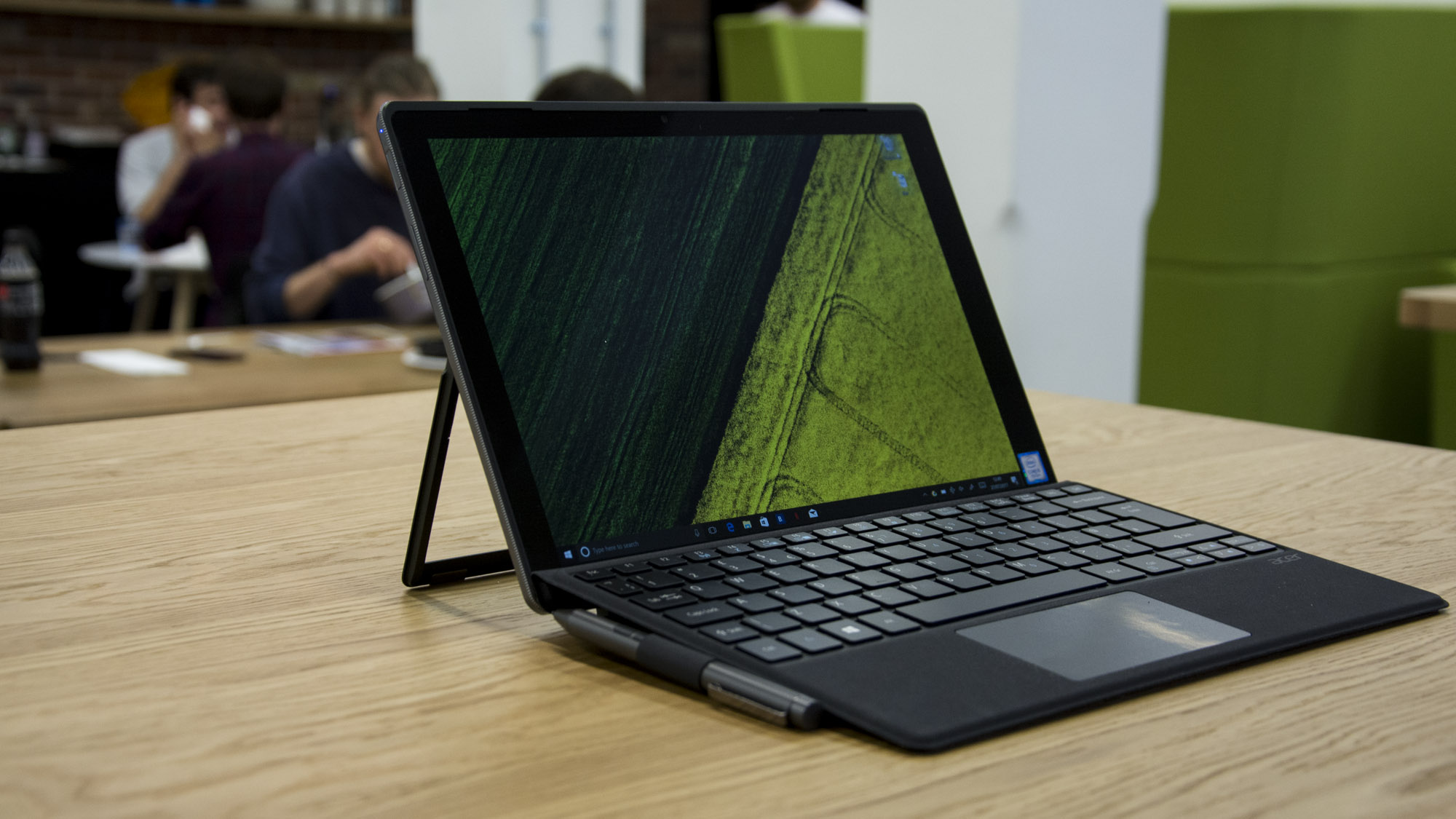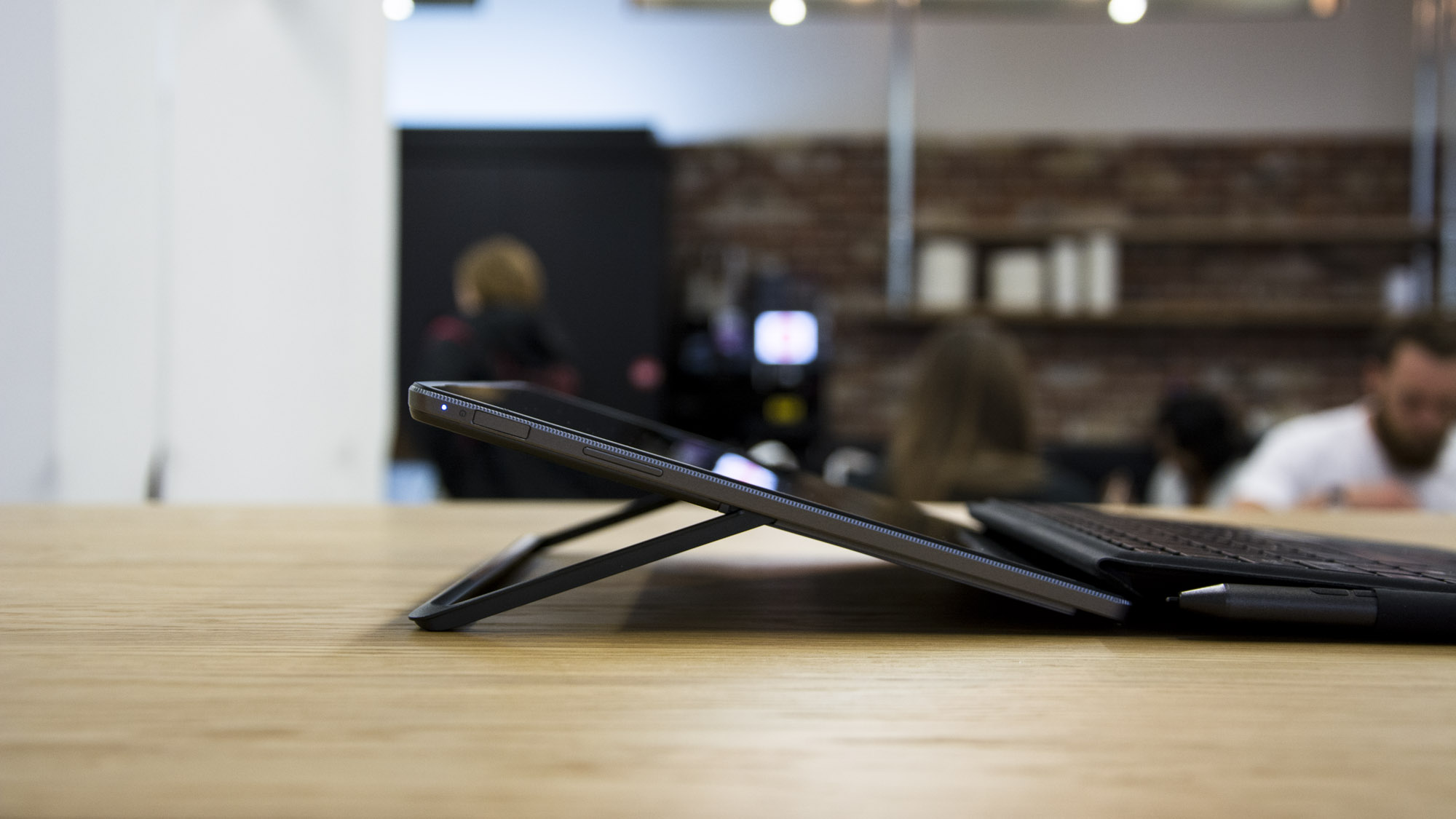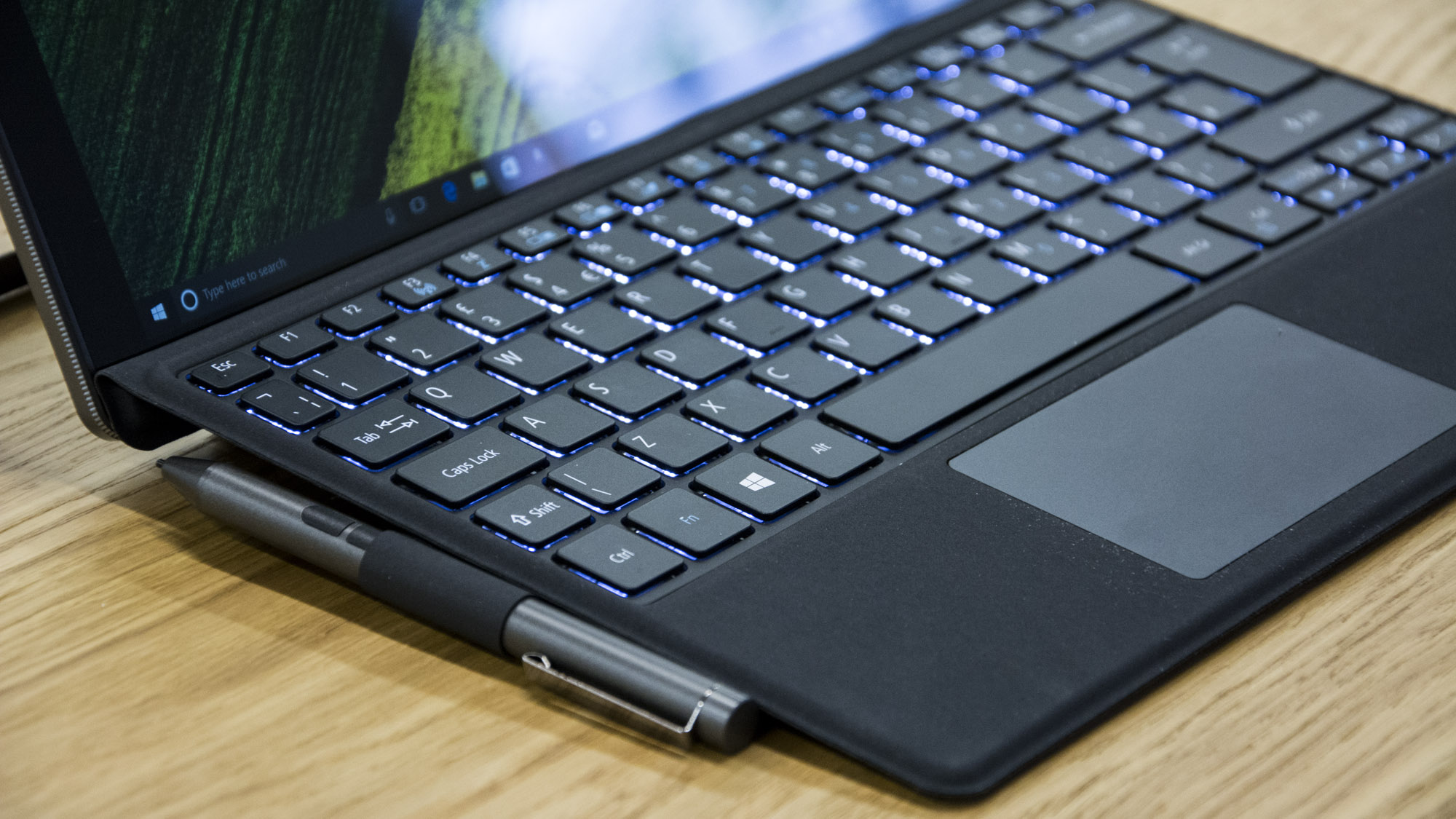Acer Switch 5 review: Not quite a Surface killer
While not quite a match for the Surface Pro, Acer's newest 2-in-1 offers serious value for money
With a spec to rival the Surface Pro, and some accessories thrown in, the Switch 5 offers a decent 2-in-1 experience at a great price point. Unfortunately, woeful display performance and an average battery life hold it back from being a true challenger to the Surface range. Still, the Switch 5 is a great companion device if you're in the market for something cheaper.
-
+
Entirely silent; Keyboard and stylus included; Generous spec for the price
-
-
Poor display performance; Average battery life
The Acer Switch 5 is the latest example of a style that's becoming increasingly popular among users wanting a the flexibility of a tablet, with the power and functionality of a laptop.
Unsurprisingly, there's now a healthy selection of Windows-based 2-in-1 devices out there, and the Switch 5 offers a spec and price point to rival Microsoft's highly rated Surface range.
The Switch 5 builds on last year's Switch Alpha 12 by providing greater power and a more refined design, while keeping that excellent liquid cooling system. But, with a starting price of over 200 more, it worth the extra cash?
Design & connectivity

The Switch 5 follows a similar design philosophy of its older sibling the Alpha 12, although this time Acer has chosen to add a new serrated-style edge to the tablet frame. The most important thing to note is that the tablet feels exceptionally well built, and seems robust enough to survive a few accidental drops.
At less than 1kg and 12mm thick with the keyboard attached, the Switch 5 is certainly light and thin enough to slot easily into a bag or carry around an office and is only marginally thicker and lighter than the more expensive Surface Pro 4.
While connectivity options are fairly limited on the Switch 5, it does include a USB Type C port, a premium port option that's either missing on rival devices, or reserved for charging the battery. You also get a USB 3.0 port, as well as a headphone port and MicroSD card slot located on the top edge of the screen.
Acer also makes excellent use of space by integrating a fingerprint scanner into the power button on the upper left side of the tablet. It's a novel way of adding a premium feature to an existing function, and is especially useful when waking the tablet from sleep, as you're powering up and logging in at the same time.

The stand is by far the most interesting aspect of the Switch 5, and for us, alas, it's also one of its weakest. It uses a single metal bar shaped to the lower half of the tablet, that pops out and rests at an initial angle, but then can be slid further out by pushing on the tablet screen.
The issue is that, unlike the Surface Pro's smooth hinge, the Switch 5 stand will pop back to its initial position if the weight of the tablet isn't pushing down on it. That means if you decide to move the tablet for any reason, or accidently lift it up while it's on your lap, you will need to readjust the screen each time. The stand offers superb angles, allowing you to almost lie the tablet flat on a surface, but the snapback function may frustrate more than it helps.
The metal stand is also not the most attractive solution we have seen on a 2-in-1, and its edges feel a little too sharp and unrefined to be picked up with ease. It's also somewhat difficult to push the stand outwards with one hand, as the bar sits near flush to the tablet. Functionally, it does its job very well, we just wish Acer had spent a little more time refining the design.
Keyboard, trackpad & stylus

The great thing about the Switch 5 is that it comes bundled with both a keyboard and stylus. As great as the new Surface Pro is, the fact that you have to spend extra in order to get a laptop experience is a bitter pill to swallow. In this respect, there's genuine value behind the Switch 5's price point of 899.
The keyboard, albeit less refined, is similar to the Surface Pro's, using the same magnetic strip to connect to the base of the laptop without a fuss, that folds over and gives the board a slight elevation. It's a technique that makes typing a far more comfortable experience than a flat board, and you get none of that 'bounce' you find on elevated keyboards offered by cheaper competitors. Given the price of the device, the keyboard lives up to expectations - decent travel time and some nicely spaced keys make fast typing a breeze.
We had few complaints about the trackpad, which worked perfectly when using swiping and navigating around the screen and has some satisfying clicks for the left and right sides of the pad. However, the surface is coated in plastic, rather than the glass or metal of premium boards, and so you may occasionally find your fingers sticking to the board. It's also flush with the spacebar, so it sits slightly off to the left, but it's a decent size and shouldn't cause you any issues.
The stylus works well enough for basic writing tasks, but it lacks a lot of the headline features of rivals, such as shading or tilt-detection, and its fairly average pressure sensitivity of 1,024 pales in comparison to the Surface Pen, iPad Pencil or Samsung S-Pen, each with sensitivities of over 4,000. Ultimately, you're unlikely to find a great deal of use for the stylus, but it's capable nonetheless.
Get the ITPro daily newsletter
Sign up today and you will receive a free copy of our Future Focus 2025 report - the leading guidance on AI, cybersecurity and other IT challenges as per 700+ senior executives
Dale Walker is a contributor specializing in cybersecurity, data protection, and IT regulations. He was the former managing editor at ITPro, as well as its sibling sites CloudPro and ChannelPro. He spent a number of years reporting for ITPro from numerous domestic and international events, including IBM, Red Hat, Google, and has been a regular reporter for Microsoft's various yearly showcases, including Ignite.
-
 Third time lucky? Microsoft finally begins roll-out of controversial Recall feature
Third time lucky? Microsoft finally begins roll-out of controversial Recall featureNews The Windows Recall feature has been plagued by setbacks and backlash from security professionals
By Emma Woollacott Published
-
 The UK government wants quantum technology out of the lab and in the hands of enterprises
The UK government wants quantum technology out of the lab and in the hands of enterprisesNews The UK government has unveiled plans to invest £121 million in quantum computing projects in an effort to drive real-world applications and adoption rates.
By Emma Woollacott Published
-
 Businesses are taking their eye off the ball with vulnerability patching
Businesses are taking their eye off the ball with vulnerability patchingNews Security leaders are overconfident in their organization’s security posture while allowing vulnerability patching to fall by the wayside.
By Jane McCallion Published